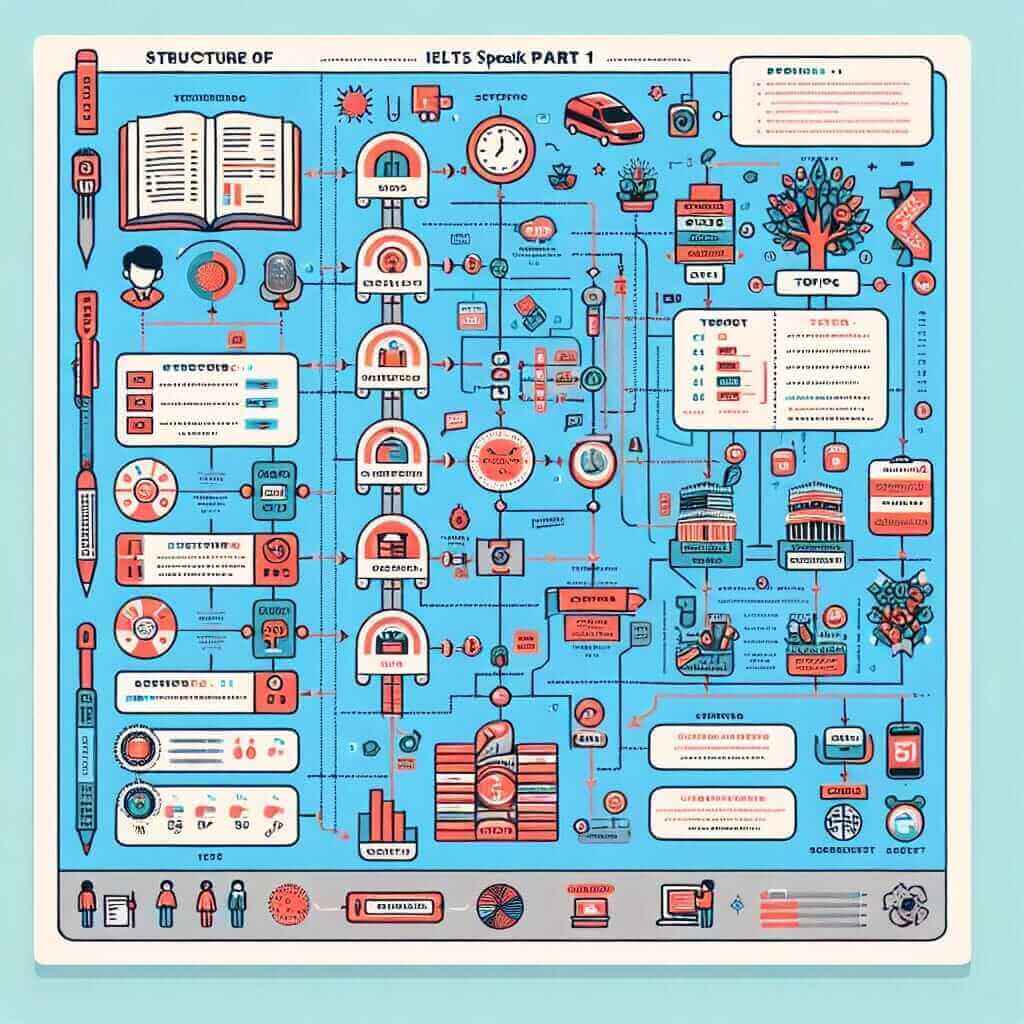The IELTS Speaking Part 1 is the first segment of the IELTS Speaking test, where candidates engage in a face-to-face interview with an examiner. This section typically lasts about 4-5 minutes and includes questions on familiar topics such as home, work, studies, and personal interests. Mastering this part sets the tone for the rest of the speaking test. Let’s delve into some essential tips, supported by real examples, to help you excel in this part of the IELTS exam.
Understanding IELTS Speaking Part 1
IELTS Speaking Part 1 is designed to assess your ability to communicate opinions and information on everyday topics. The questions require you to speak about yourself and your experiences.
Key Points:
- Duration: Approximately 4-5 minutes.
- Topics: Everyday subjects like home, family, work, studies, and interests.
- Questions: Usually 12 questions divided into three topic areas.

Tips to Excel in IELTS Speaking Part 1
1. Be Conversational
One of the primary goals is to demonstrate your ability to hold a natural conversation. A conversational tone rather than a robotic answer will make you appear more fluent and confident.
Example:
Question: “Do you work or are you a student?”
Answer: “I’m currently a student, studying Computer Science at the university. I’ve always been fascinated by technology and how it shapes our world.”
2. Extend Your Answers
While you need to be concise, single-word answers should be avoided as they do not provide enough evidence of your speaking ability. Aim to answer with at least two or three sentences.
Example:
Question: “Do you like your hometown?”
Answer: “Yes, I do. My hometown is peaceful and has a close-knit community. I especially love the local park where I spent most of my childhood.”
3. Use a Variety of Sentence Structures
Using a mix of simple, compound, and complex sentences will showcase your versatility in English.
Example:
Question: “What do you do in your free time?”
Answer: “In my free time, I enjoy reading books. I often read mystery novels because they keep me engaged. Besides reading, I also like to go hiking whenever the weather is nice.”
4. Clear Pronunciation
Pronunciation is crucial. Speak clearly and at a steady pace to ensure the examiner understands you.
Example:
Practice with words that are often mispronounced and ensure the correct use of intonation patterns.
5. Be Ready For Follow-up Questions
Sometimes examiners will ask follow-up questions to probe deeper into a topic. Be prepared to elaborate on your initial responses.
Example:
Follow-up Question: “Why did you choose to study Computer Science?”
Answer: “I chose Computer Science because it offers endless opportunities for innovation. The field constantly evolves, and I find that exciting.”
Applying These Tips in Real IELTS Exams
Structure Practice Sessions
To effectively prepare, use the following strategies:
- Mock Interviews: Simulate Part 1 of the IELTS Speaking test with a friend or tutor.
- Timed Responses: Practice answering questions within specific time limits.
- Record Yourself: Listen to your recordings to identify areas of improvement.
Common Mistakes to Avoid
- Monosyllabic Responses: Avoid giving yes/no answers without elaboration.
- Overly Complicated Language: Using unnecessarily complex words can make your speech sound unnatural.
- Memorization: Rote learning can make your responses robotic. Focus on natural fluency instead.
Practical Exercises
- Question Drills: Practice answering typical Part 1 questions and extend them.
- Daily Journaling: Write about your daily activities to improve fluency.
- Fluency Practice: Use apps designed to improve speaking skills via repetition and feedback.
Conclusion
The IELTS Speaking Part 1 is your opportunity to make a strong first impression on the examiner. By being conversational, extending your answers, and practicing regularly, you can significantly enhance your performance. Remember, the key is to communicate clearly and naturally, using a variety of sentence structures.
For further practice and tips, feel free to explore other resources on our website and share your experiences in the comments below. Good luck with your IELTS preparation!